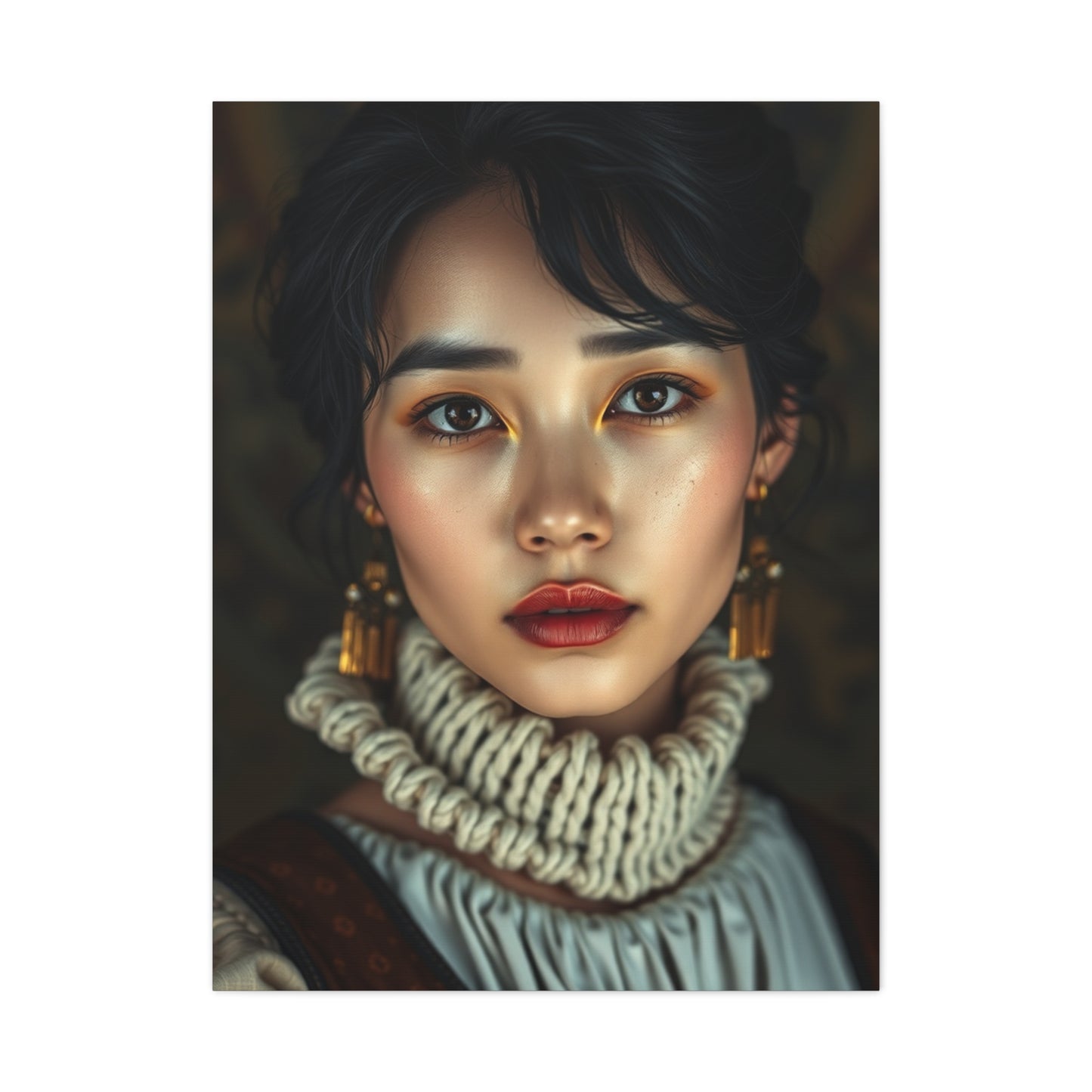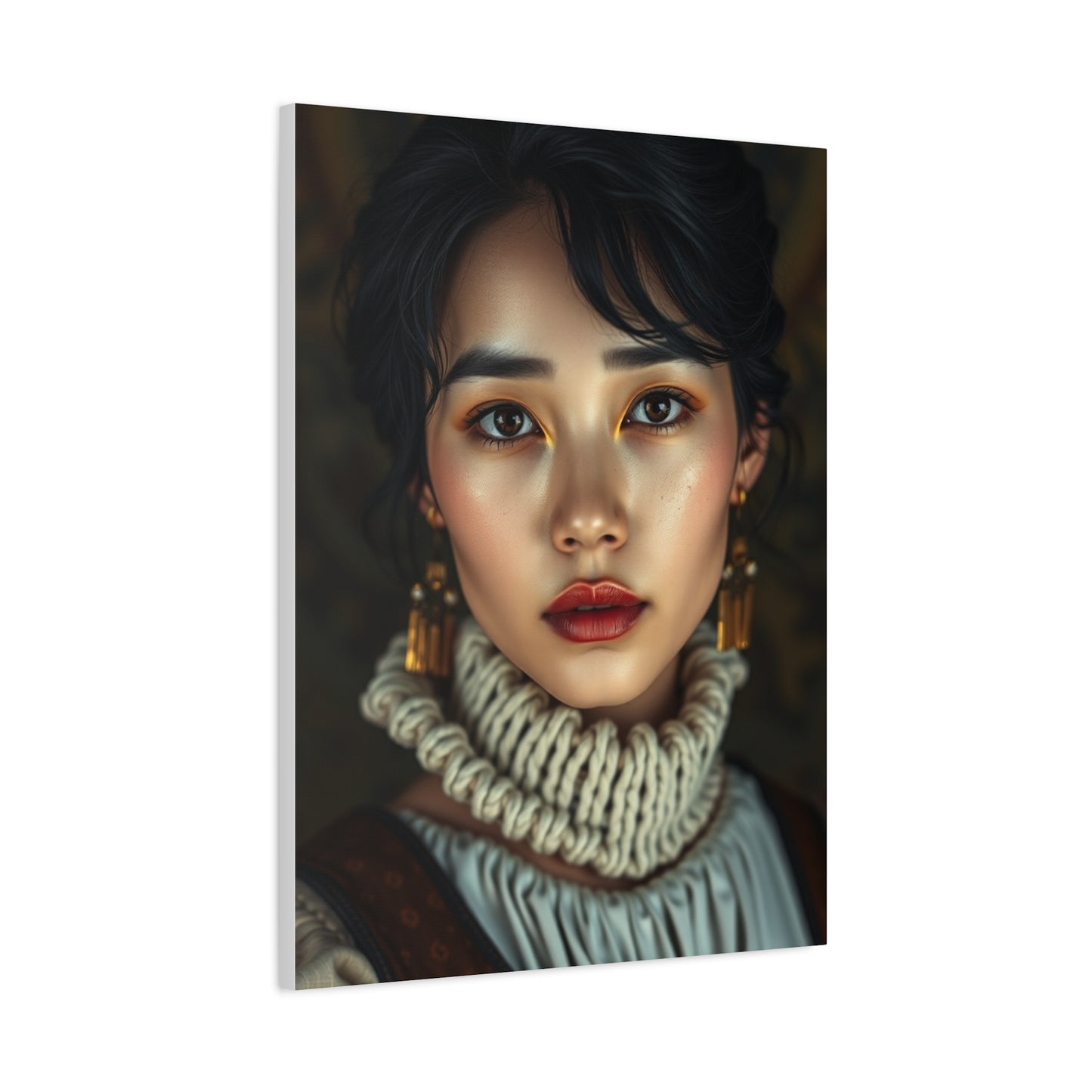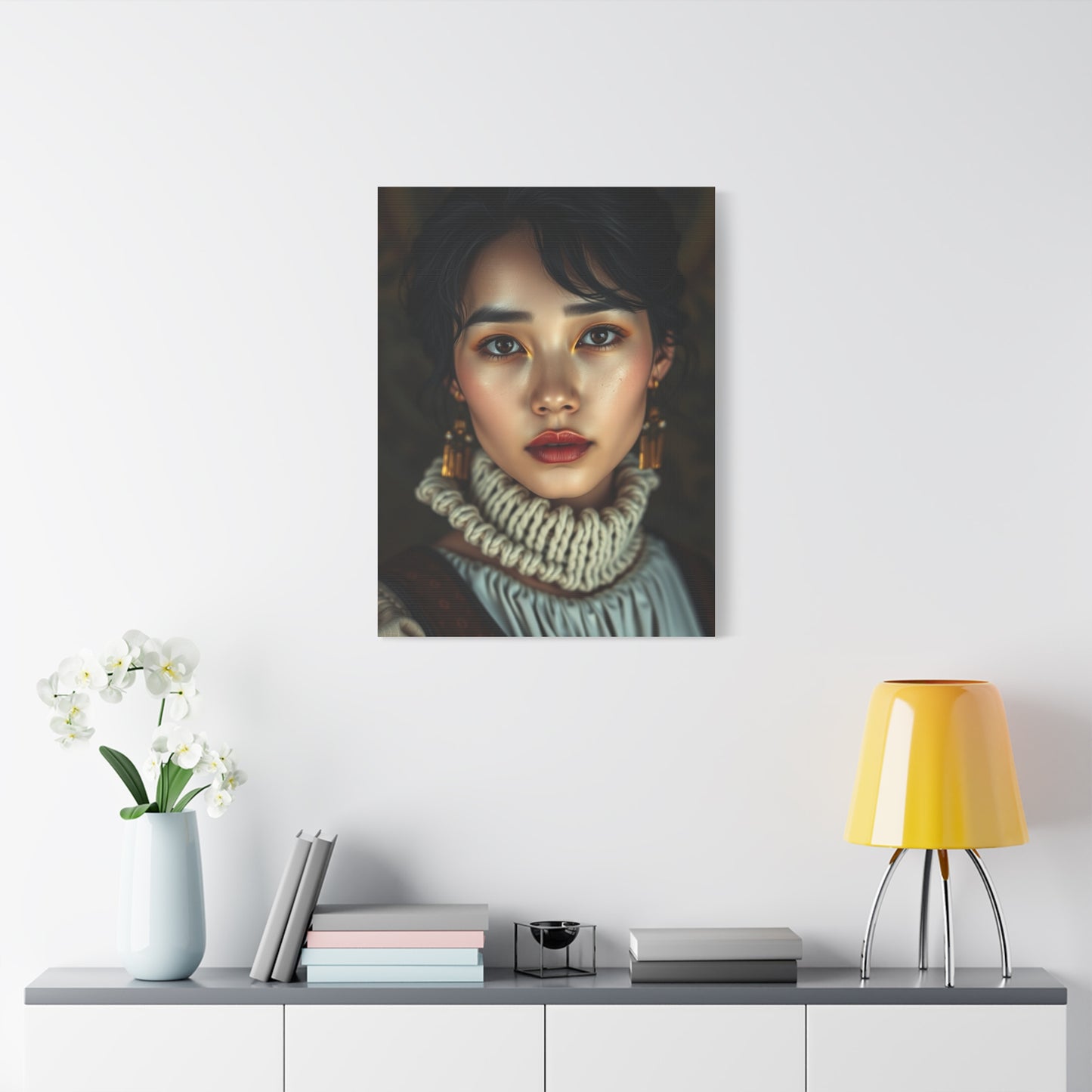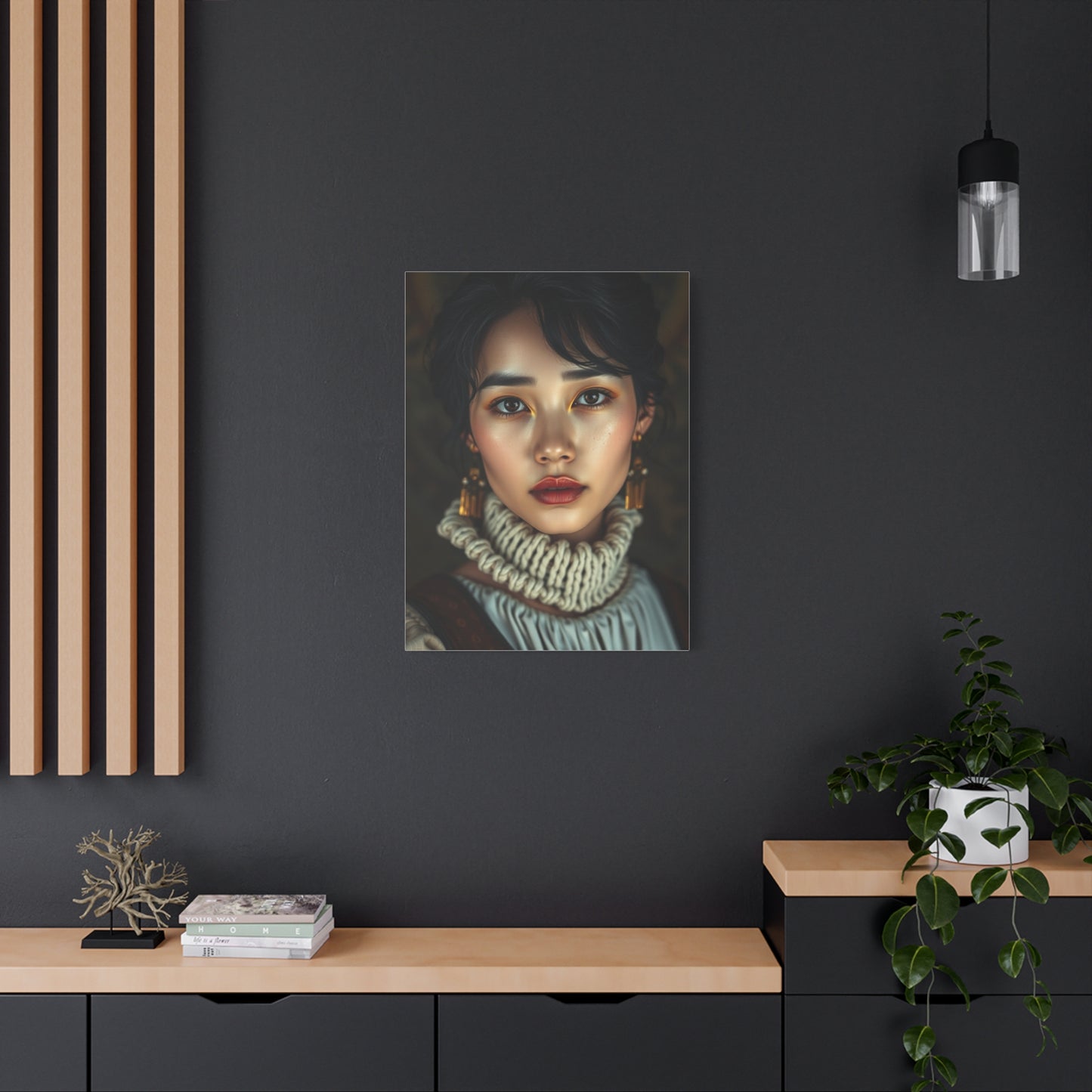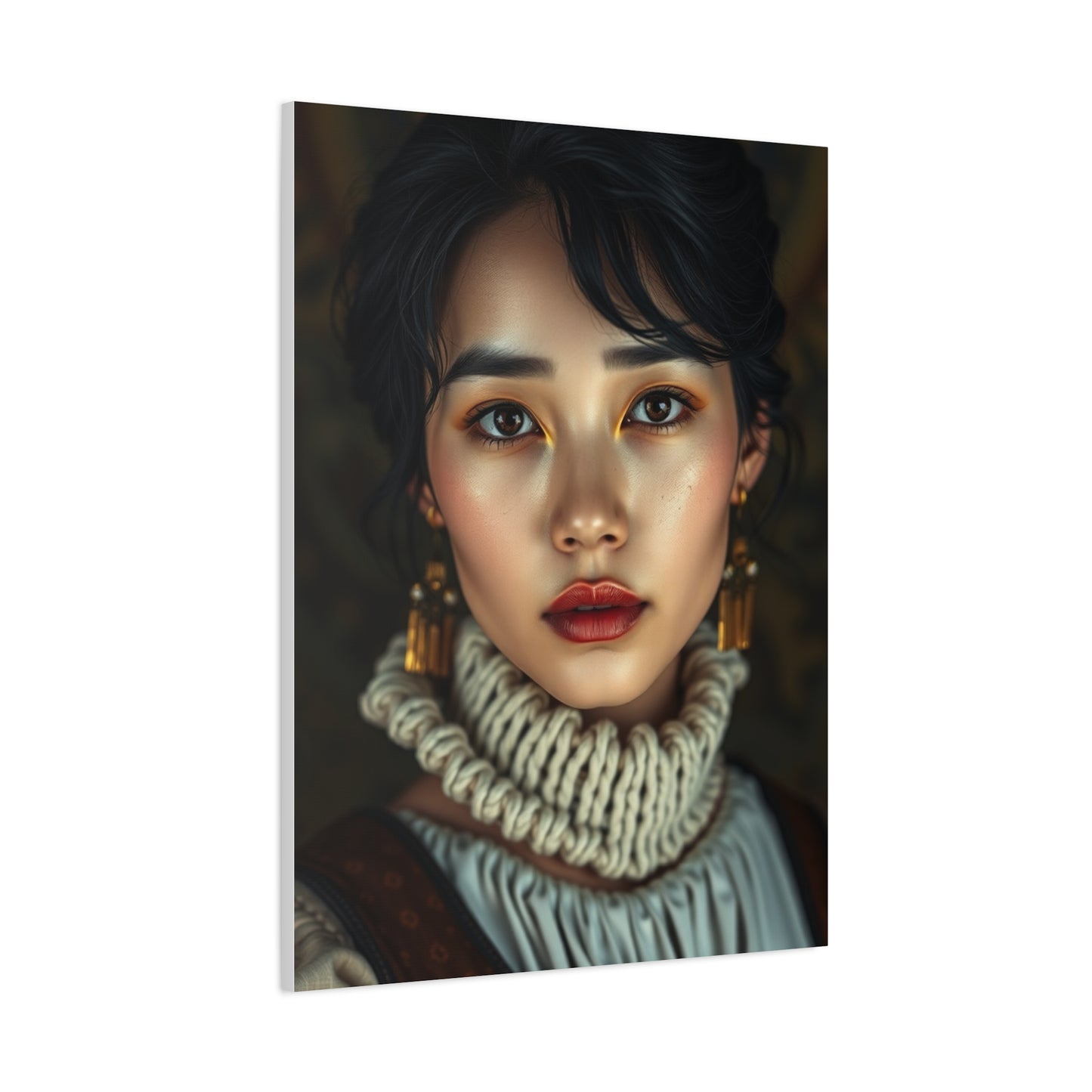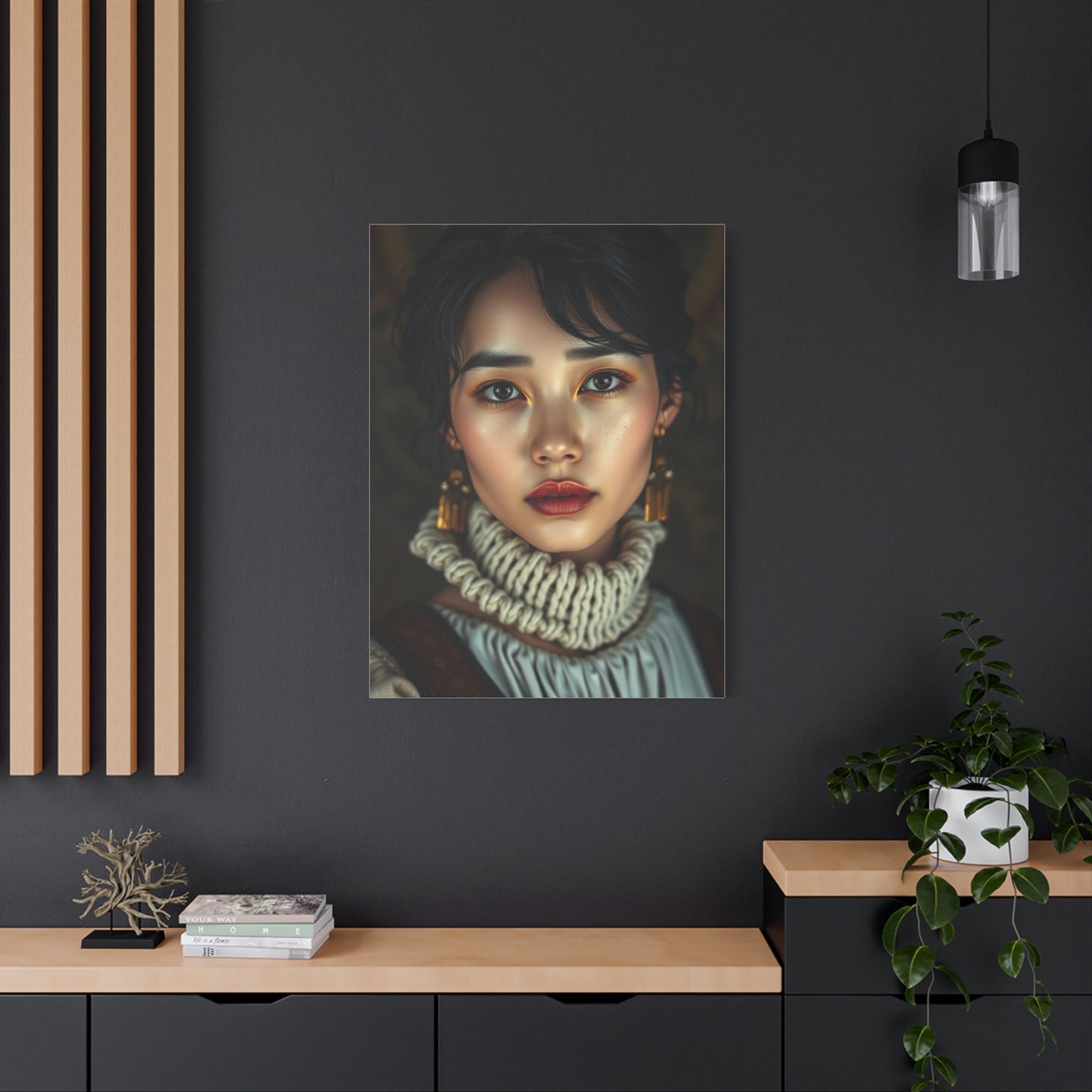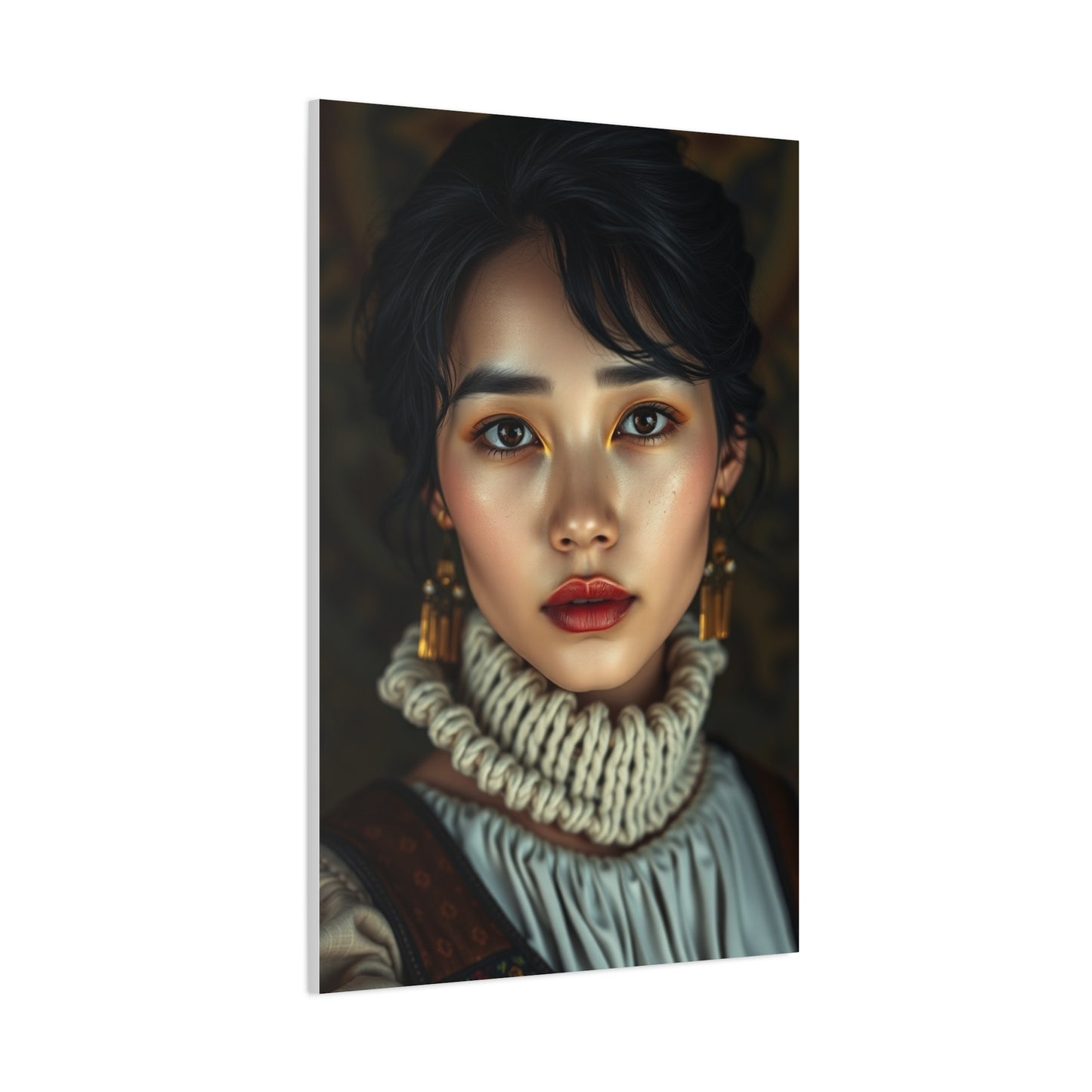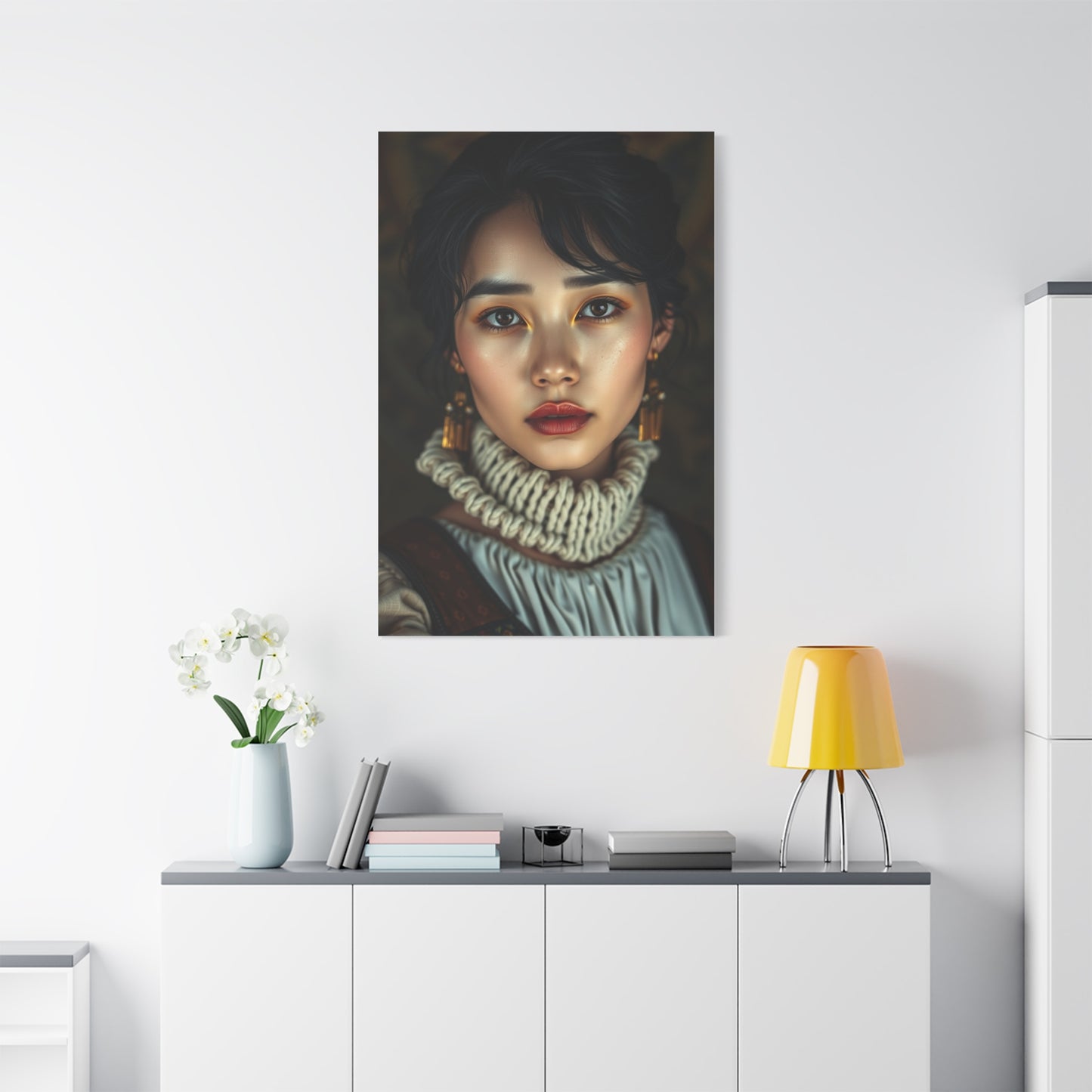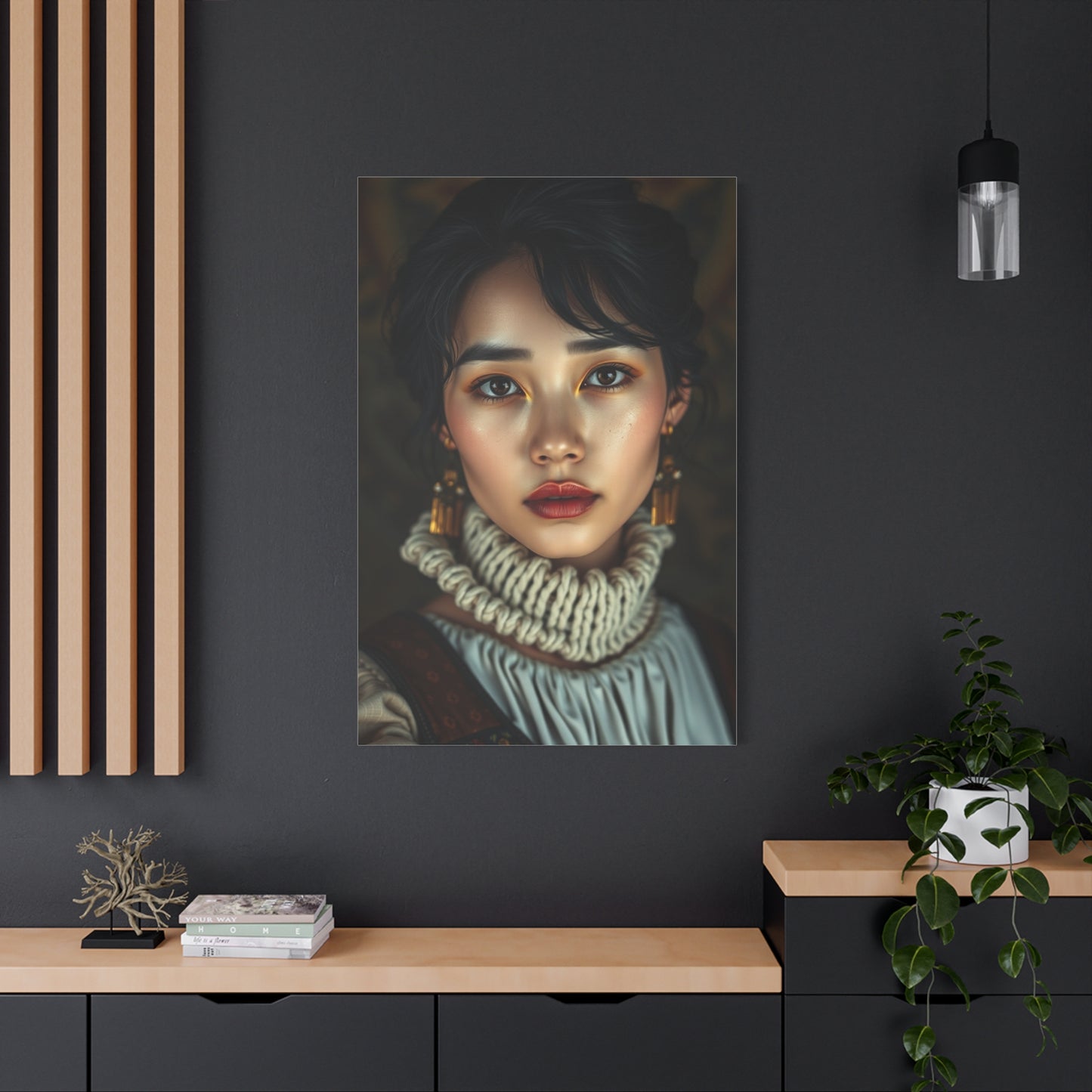Cosmic Inspiration Meets Modern Interiors: Celestial Contour Masterpiece Wall art Décor Ideas
The world of interior design has witnessed a remarkable transformation with the emergence of celestial contour wall art, a sophisticated fusion of astronomical wonder and minimalist artistic expression. This captivating art form draws inspiration from the mysteries of the cosmos, translating the ethereal beauty of celestial bodies into elegant line work and abstract compositions that resonate with modern sensibilities. As homeowners and design enthusiasts seek to create spaces that reflect both personal style and contemporary trends, celestial contour artwork has emerged as a powerful tool for transforming ordinary rooms into extraordinary sanctuaries of visual interest and emotional depth.
The appeal of celestial contour wall art lies in its unique ability to bridge the gap between simplicity and complexity. Through carefully crafted lines that trace the curves of moons, the patterns of constellations, and the flowing forms of cosmic phenomena, these artworks capture the essence of the universe while maintaining an accessible, refined aesthetic. The contour technique, which relies on line work to define shapes and suggest volume without heavy shading or color saturation, creates pieces that are simultaneously bold and subtle, making them versatile additions to diverse interior spaces. Whether adorning the walls of a minimalist apartment, adding sophistication to a modern office, or bringing wonder to a child's bedroom, celestial contour art offers endless possibilities for creative expression and spatial enhancement.
This comprehensive exploration delves into the multifaceted world of celestial contour wall art, examining its various manifestations, design principles, placement strategies, and cultural significance. From understanding the technical aspects of contour drawing to discovering how these cosmic compositions can influence mood and atmosphere, this guide provides valuable insights for anyone interested in incorporating this enchanting art form into their living or working spaces. The journey through celestial contour art reveals not only aesthetic considerations but also the deeper human connection to the cosmos that has inspired artists and dreamers throughout history.
Understanding the Foundations of Celestial Contour Artistic Expression
Celestial contour wall art represents a distinctive artistic approach that combines the age-old fascination with the heavens and the timeless technique of contour drawing. To fully appreciate this art form, one must understand its foundational elements and the principles that guide its creation. Contour drawing, at its core, is a method of depicting subjects through the use of continuous lines that define edges and suggest form without relying heavily on internal details, shading, or color variation. When applied to celestial themes, this technique takes on a special quality, as the natural curves and shapes of astronomical bodies lend themselves beautifully to linear representation.
The history of contour drawing dates back centuries, with artists using this method to capture the essential character of their subjects with economy and grace. In the context of celestial art, contour lines become vehicles for expressing the majesty of the cosmos in its most distilled form. The moon, with its circular perfection and surface variations, becomes a series of nested curves. Stars transform into radiating points connected by invisible threads of visual energy. Planets and cosmic phenomena are reduced to their most essential geometric forms, allowing viewers to recognize and connect with these celestial objects while appreciating the artistic interpretation that makes each piece unique.
What distinguishes celestial contour wall art from traditional astronomical illustration or more realistic space art is its emphasis on suggestion rather than detailed representation. These artworks do not aim to reproduce the exact appearance of celestial bodies as captured by telescopes or spacecraft. Instead, they seek to convey the emotional and spiritual impact of encountering the night sky, the sense of wonder that comes from contemplating our place in the universe, and the aesthetic pleasure derived from observing cosmic patterns and forms. The selective use of lines, the deliberate spacing between elements, and the careful consideration of positive and negative space all contribute to creating compositions that feel both anchored in reality and freed from its constraints.
The technical execution of celestial contour art requires a deep understanding of both artistic principles and the subjects being depicted. Artists working in this style must consider the weight and quality of their lines, knowing that in the absence of color and shading, every mark carries significant visual importance. Thin, delicate lines might suggest the distant glow of stars or the subtle gradations on a lunar surface, while bold, confident strokes could represent the definitive edge of a planetary body or the powerful sweep of a comet's tail. The rhythm and flow of these lines create visual movement that guides the viewer's eye through the composition, establishing focal points and creating relationships between different elements within the artwork.
Exploring Abstract Interpretations of Cosmic Line Compositions
Abstract celestial contour canvas art pushes the boundaries of recognizable astronomical imagery into the realm of pure aesthetic experience. These interpretations maintain a connection to cosmic themes while allowing for greater artistic freedom and personal expression. In abstract celestial compositions, the familiar shapes of moons, stars, and planets may be fragmented, recombined, or reimagined in ways that challenge conventional perception while still evoking the essential character of celestial phenomena. This approach opens up exciting possibilities for creating wall art that functions as both a homage to the cosmos and a standalone work of visual interest.
The abstract approach to celestial contour art often involves deconstructing recognizable astronomical forms and reconstructing them according to artistic intuition and design principles rather than literal accuracy. A crescent moon might be represented not as a simple curved line, but as a series of overlapping arcs that suggest movement, transformation, or multiple perspectives. Stars could appear as explosive bursts of radiating lines, interconnected networks suggesting cosmic relationships, or simplified geometric points that create rhythm and pattern across the canvas surface. This abstraction allows the artwork to transcend its specific subject matter and speak to broader themes of energy, connection, mystery, and beauty.
Color plays a particularly interesting role in abstract celestial contour canvas pieces. While traditional contour drawing typically relies on monochromatic approaches, abstract interpretations often introduce limited color palettes that enhance the cosmic atmosphere without overwhelming the essential linear quality of the work. Deep blues and purples evoke the darkness of space, while touches of metallic gold, silver, or copper suggest the luminous quality of celestial bodies and the precious nature of cosmic phenomena. Some artists working in this style create tension between warm and cool tones, using color temperature to add depth and emotional resonance to their compositions. The strategic application of color in these pieces serves to highlight certain contours, create focal areas, and establish visual hierarchies that guide the viewing experience.
Texture and layering techniques further distinguish abstract celestial contour canvases from their more straightforward counterparts. Some artists build up surfaces with mixed media, adding physical dimension that creates actual contours on the canvas surface rather than merely depicting them through line work. This approach might involve using modeling paste to create raised areas representing lunar craters or planetary formations, or applying metallic leaf to certain sections to catch light and suggest the reflective quality of celestial bodies. Other artists work with transparency and overlapping elements, creating visual depth through the interplay of multiple layers of contour lines, each suggesting a different plane or aspect of the cosmic scene. These technical explorations expand the definition of contour art while maintaining its essential character and appeal.
The interpretive nature of abstract celestial contour art makes it particularly well suited to contemporary interiors that favor personal expression over conventional decoration. These pieces invite viewers to project their own meanings and associations onto the work, creating a more active and engaging relationship between the artwork and its audience. A composition that one person interprets as a stylized representation of the solar system might suggest to another viewer the interconnectedness of all things, the passage of time, or the beauty of mathematical patterns in nature. This multiplicity of possible readings gives abstract celestial contour canvases a richness and longevity that purely decorative art often lacks, as the pieces continue to reveal new aspects and inspire fresh insights with repeated viewing.
Incorporating Cosmic Linear Elements into Contemporary Interior Design
Cosmic line art wall décor has established itself as a significant trend in contemporary interior design, offering a sophisticated way to bring astronomical themes into living spaces without resorting to literal or overly literal representations. The appeal of this approach lies in its ability to suggest the grandeur and mystery of the cosmos through elegant, minimalist means. Rather than filling walls with detailed star maps or photographic reproductions of nebulae, cosmic line art distills celestial subjects to their essential forms, creating pieces that integrate seamlessly with modern design aesthetics while retaining their thematic power and visual interest.
The integration of cosmic line art into interior spaces requires thoughtful consideration of both the artwork itself and the environment in which it will be displayed. These pieces work particularly well in settings that already embrace clean lines, geometric forms, and restrained color palettes. In a minimalist living room with neutral walls and simple furnishings, a large-scale cosmic line art piece can serve as a dramatic focal point that adds visual interest without creating clutter or chaos. The linear quality of the artwork complements the architectural lines of the space, while the cosmic theme introduces an element of wonder and imagination that prevents the room from feeling sterile or impersonal. The key is to select pieces that resonate with the overall design vocabulary of the space while offering enough contrast to command attention and spark conversation.
Scale and proportion play crucial roles in successfully incorporating cosmic line art wall décor into interior settings. Oversized pieces that span significant portions of a wall create immediate impact and can anchor entire room designs around their presence. These large-format works are particularly effective in spaces with high ceilings or expansive wall areas that might otherwise feel empty or underutilized. The generous dimensions allow the line work to be appreciated from various distances, revealing different qualities of the composition as viewers move closer or further from the artwork. Fine details that might be overlooked in smaller pieces become clearly visible in large-scale installations, while the overall impact of the composition remains strong even when viewed from across a room. This versatility makes oversized cosmic line art ideal for public spaces, open-concept homes, and areas designed for entertaining.
Alternatively, smaller cosmic line art pieces can be deployed in more intimate settings or as part of larger gallery wall arrangements. A series of related works, each featuring different aspects of celestial phenomena rendered in consistent linear style, can create a cohesive visual narrative that unfolds across a wall surface. This approach works well in hallways, stairwells, or bedroom walls where multiple smaller pieces can be appreciated individually and as parts of a greater whole. The repetition of the contour technique across multiple works establishes visual rhythm and creates a sense of intentionality and curation that elevates the overall design scheme. When composing such arrangements, designers often vary the specific subjects and compositions while maintaining consistency in line weight, color palette, and overall aesthetic approach.
The framing and presentation of cosmic line art wall décor significantly influences its impact and integration into interior spaces. Simple, clean frames in materials like black metal, natural wood, or minimalist white emphasize the artwork itself without creating visual competition. For pieces with white or light backgrounds, floating the artwork on a slightly recessed mount creates subtle shadow effects that add depth and sophistication to the presentation. Some contemporary approaches eschew traditional frames altogether, opting for gallery-wrapped canvases where the artwork extends around the edges, creating a clean, modern look that works particularly well with abstract cosmic line compositions. The choice of presentation method should consider not only the style of the artwork but also the architectural character of the space and the other design elements present in the room.
Creating Timeless Appeal Through Celestial Masterpiece Compositions
Celestial masterpiece wall prints represent the pinnacle of this art form, combining technical excellence, aesthetic sophistication, and thematic depth to create works that transcend mere decoration and achieve the status of genuine artistic statements. These exceptional pieces distinguish themselves through their ambitious scale, complex compositions, and the evident skill required to execute them successfully. While all celestial contour art draws on cosmic themes and linear techniques, masterpiece-level works push these elements further, creating compositions that reward extended contemplation and reveal new dimensions with each viewing. The creation of such pieces requires not only technical proficiency but also a deep understanding of design principles, a refined artistic sensibility, and often a philosophical or emotional connection to the cosmic themes being explored.
The compositional complexity of celestial masterpiece wall prints sets them apart from simpler interpretations of astronomical subjects. Rather than focusing on a single celestial body or phenomenon, these ambitious works often incorporate multiple elements arranged in carefully balanced relationships that create visual harmony while suggesting narratives or conceptual frameworks. A masterpiece composition might feature a large central moon surrounded by smaller celestial elements that orbit visually around this focal point, creating a sense of gravitational pull and cosmic order. Alternatively, the composition might eschew a single dominant element in favor of an all-over approach where multiple forms of similar visual weight are distributed across the surface, creating a sense of infinite extension that suggests the boundless nature of space itself. These compositional choices reflect sophisticated understanding of visual dynamics and demonstrate the artist's ability to control and direct viewer attention while allowing for discovery and exploration.
The refinement of line work in celestial masterpiece prints reaches levels that distinguish these pieces from more straightforward decorative art. Every line in a masterpiece composition serves multiple purposes simultaneously, defining form, creating rhythm, suggesting movement, and contributing to the overall aesthetic impact of the work. The variation in line weight throughout the composition creates visual hierarchy and depth, with thicker lines often used to define primary forms and establish structure, while finer lines add detail, texture, and secondary elements that enrich the viewing experience without overwhelming the core composition. The control required to maintain consistent line quality throughout an ambitious composition while also introducing the subtle variations that prevent monotony and create visual interest demonstrates mastery of the medium and elevates the work beyond the capabilities of less experienced practitioners.
Thematic depth gives celestial masterpiece wall prints resonance that extends beyond their visual appeal. These works often engage with profound questions about humanity's relationship to the cosmos, the nature of time and space, or the emotional and spiritual dimensions of astronomical contemplation. A masterpiece depicting the phases of the moon might serve as meditation on cycles, change, and the passage of time, while a complex composition featuring interconnected constellations could explore themes of connection, destiny, and the human impulse to find patterns and meaning in the natural world. The best celestial masterpiece prints operate on multiple levels simultaneously, offering immediate visual satisfaction while also inviting deeper reflection and interpretation. This quality makes them particularly valued by collectors and design enthusiasts who seek art that continues to engage and inspire long after its initial impact has faded.
The production quality of celestial masterpiece wall prints must match the ambition of their conception and execution. These pieces typically utilize premium materials and reproduction methods that ensure the final prints accurately capture the nuances of the original artwork. High-resolution digital printing on archival-quality paper or canvas, professional color calibration to maintain fidelity to the artist's vision, and protective coatings that prevent fading and degradation all contribute to creating prints worthy of the masterpiece designation. Limited edition prints with artist signatures and certificates of authenticity add collectible value and ensure exclusivity, appealing to buyers who view these pieces not merely as decoration but as genuine art investments. The presentation of these prints, including custom framing options and professional installation services, completes the premium experience and ensures that the final installed piece lives up to its masterpiece potential.
Enhancing Interiors with Luminous Golden Contour Lunar Designs
Golden contour moon wall art introduces an element of luxury and warmth to the celestial contour genre, combining the elegant simplicity of line drawing with the rich, precious quality of gold tones. This particular manifestation of celestial art has gained significant popularity in contemporary interior design, as it successfully bridges the gap between the cool, cerebral quality often associated with astronomical themes and the warm, inviting character desired in residential spaces. The incorporation of gold into lunar contour compositions creates artworks that feel both sophisticated and accessible, modern yet timeless, making them versatile additions to diverse design schemes ranging from traditional to contemporary.
The choice to render lunar contours in gold carries both aesthetic and symbolic significance. Gold has been associated with the celestial realm across numerous cultures and historical periods, with the sun and moon frequently depicted in golden hues in religious and decorative art. This traditional association lends golden contour moon wall art a sense of timelessness and cultural depth that enhances its visual appeal. From a purely aesthetic perspective, gold tones create stunning contrast against dark backgrounds, making the lunar contours stand out with dramatic clarity while maintaining an air of refinement. When used on light backgrounds, gold takes on a more subtle, nuanced quality, suggesting gentle illumination and creating pieces that feel luminous without being overwhelming. This versatility in background treatment allows golden contour moon art to adapt to different design contexts and lighting conditions.
The rendering of lunar features through golden contours presents interesting technical and artistic challenges. The moon's surface, with its craters, maria, and subtle textural variations, offers rich opportunities for contour interpretation. Skilled artists working in this style use varying line weights and densities to suggest the moon's topographical features without resorting to detailed realistic rendering. Thicker golden lines might outline the major maria, those dark plains visible to the naked eye, while finer lines indicate crater rims and smaller surface features. The strategic placement and concentration of contour lines create an impression of depth and three-dimensionality, allowing flat artworks to suggest the moon's spherical form and surface relief. The reflective quality of metallic gold mediums enhances this dimensional effect, as changing light conditions cause different contours to catch and reflect light, creating subtle variations in the artwork's appearance throughout the day.
The emotional and atmospheric qualities of golden contour moon wall art make these pieces particularly effective in creating specific moods and feelings within interior spaces. The warm glow of golden tones against dark backgrounds creates an ambiance of intimate luxury, making these works ideal for bedrooms, dining rooms, or other spaces designed for relaxation and contemplation. The lunar subject matter introduces associations with nighttime, dreams, and the mysterious, while the gold treatment elevates these associations with connotations of value, beauty, and refinement. This combination creates artworks that feel both calming and inspiring, grounding and transcendent. In meditation spaces, home offices, or reading nooks, golden contour moon art can serve as focal points that encourage mindfulness and reflection, their simple yet elegant forms providing visual anchors that help quiet busy minds and create mental space for creative or contemplative activities.
Design applications for golden contour moon wall art extend beyond traditional framed prints to include innovative presentations that maximize the unique qualities of this art form. Canvas wraps that extend the golden lunar imagery around the edges create three-dimensional objects that function almost as sculptural elements within spaces. Large-scale murals or wall decals translate golden contour moon designs to architectural scale, transforming entire walls into lunar landscapes that dramatically alter spatial perception and atmosphere. Smaller applications, such as golden contour moon imagery on throw pillows, area rugs, or decorative screens, allow the aesthetic to be distributed throughout a space, creating cohesive design schemes where celestial themes are present but not overwhelming. These varied applications demonstrate the flexibility of the golden contour moon concept and its ability to function effectively across different scales and contexts.
Capturing Cosmic Wonder Through Stellar Contour Abstract Canvas
Starry contour abstract canvas artworks explore the relationship between the ordered patterns of constellations and the chaotic beauty of the star-filled cosmos, creating pieces that balance recognizable astronomical elements with abstract artistic interpretation. These works draw inspiration from humanity's ancient practice of finding meaningful patterns in the night sky while acknowledging the essentially random distribution of stars across space. The tension between order and chaos, between human meaning-making and natural distribution, provides rich conceptual ground for artistic exploration and results in visually compelling artworks that engage viewers on multiple levels. Through the selective use of contour lines to connect certain stars while leaving others isolated, these pieces create suggestions of constellations and cosmic relationships without slavishly reproducing actual star maps or astronomical charts.
The abstract approach to starry contour canvas art allows for creative freedom that purely representational astronomical art does not permit. Artists working in this style might draw inspiration from actual constellations but feel free to modify, elaborate, or completely reimagine the connecting lines and patterns that define these stellar groupings. A constellation like Orion might be suggested through general arrangement of key stars but with connecting contours that create different geometric patterns or organic forms compared to traditional depictions. Stars themselves might be represented not as simple points but as small bursts of radiating lines, tiny spirals, or geometric shapes that give each stellar element individual character while contributing to the overall composition. This freedom to interpret and embellish allows starry contour abstract canvases to function as genuine artistic statements rather than mere illustrations or decorative reproductions of astronomical information.
The distribution and density of stellar elements across the canvas surface significantly influences the character and impact of starry contour abstract artworks. Compositions with relatively sparse star placement against expansive dark backgrounds create a sense of the vast emptiness of space, with each star and constellation becoming precious points of light in an overwhelming void. This approach can evoke feelings of solitude, contemplation, and the sublime, making such pieces particularly effective in spaces designed for reflection and quietude. Alternatively, densely populated compositions that fill the entire canvas with stars, connecting lines, and celestial elements create a sense of abundance, complexity, and energetic dynamism. These busier pieces work well in social spaces or areas designed to stimulate creativity and conversation, as they provide numerous visual details to discover and discuss. The choice between sparse and dense approaches reflects not only aesthetic preferences but also the emotional and atmospheric goals for the artwork and the space it will inhabit.
Color strategies in starry contour abstract canvas pieces range from strictly monochromatic approaches to carefully selected limited palettes that enhance the cosmic atmosphere without overwhelming the essential linear character of the work. Traditional starry compositions often feature white or silver stars against deep black or navy backgrounds, creating maximum contrast and clearly readable forms. More adventurous color approaches might incorporate subtle gradations in the background, suggesting nebulous regions or the varied depths of space, while maintaining the crisp definition of the contour lines. Some artists introduce touches of unexpected color in the contour work itself, using warm golds, cool blues, or vibrant magentas to differentiate certain constellations, create focal points, or simply add aesthetic interest. The key is to use color purposefully, ensuring that additions enhance rather than compete with the fundamental linear composition and contribute to the overall effectiveness of the piece.
The symbolic and narrative possibilities of starry contour abstract canvas artworks extend their appeal beyond pure aesthetics. Stars and constellations have served as navigational tools, mythological characters, and sources of wonder throughout human history, and contemporary artworks that reference this rich cultural heritage tap into deep reservoirs of meaning and association. A piece that features connecting lines between stars might suggest themes of connection, relationship, and the invisible bonds that link separate entities into meaningful wholes. Works that emphasize the geometric patterns created by stellar arrangements could speak to the human impulse to find order in nature, to see patterns and meaning where none inherently exists. These conceptual dimensions give starry contour abstract canvases depth and significance that purely decorative star-themed art often lacks, making them particularly appealing to buyers and viewers who value art that engages both the eye and the mind.
Achieving Refined Simplicity in Minimalist Celestial Contour Artworks
Minimalist celestial contours art represents the purest distillation of this artistic approach, stripping away all non-essential elements to reveal the fundamental forms and relationships that define celestial subjects. This austere approach aligns perfectly with broader minimalist design philosophies that value simplicity, clarity, and the careful curation of elements rather than abundance and complexity. In minimalist celestial contour pieces, every line carries maximum significance, as there are few enough marks on the surface that each one receives focused attention. This economy of means requires exceptional skill and judgment from artists, as successful minimalist works must achieve visual and emotional impact with strictly limited resources. The result, when executed well, is artwork of remarkable elegance and power that proves the artistic principle that less can indeed be more.
The defining characteristics of minimalist celestial contours art include radical simplification of forms, extensive use of negative space, and strict limitation of color and tonal variation. A minimalist lunar composition might reduce the moon to a simple circle or crescent with just a few internal contour lines suggesting major surface features, trusting the viewer's knowledge and imagination to complete the image. Constellations might be represented by the smallest possible number of points and connecting lines necessary to make the pattern recognizable, or even by a single elegant line that traces the constellation's general form. Stars could appear as tiny dots or the barest suggestions of radiant points, their presence felt rather than explicitly shown. This radical reduction focuses attention on the essential character of celestial subjects, revealing their fundamental geometric and visual properties in ways that more detailed representations might obscure.
The use of negative space becomes particularly critical in minimalist celestial contours art, as the empty areas of the composition work as actively as the marked areas to create visual interest and meaning. In a minimalist piece featuring a crescent moon, the large expanse of unmarked canvas around the slender lunar form is not merely background but an integral part of the composition that suggests the vastness of space and creates a sense of isolation and preciousness around the celestial object. The ratio of marked to unmarked surface, the shape of negative spaces, and the relationships between positive forms and surrounding emptiness all become subjects of careful consideration and deliberate design. This emphasis on negative space aligns minimalist celestial contours art with Asian artistic traditions, particularly Japanese aesthetics, which have long valued emptiness, suggestion, and the spaces between things as essential components of artistic expression.
Color in minimalist celestial contours art typically follows extremely restrained palettes, often limiting itself to variations of a single hue or strict black and white compositions. This color restriction serves multiple purposes: it maintains focus on form and line rather than allowing color relationships to become dominant, it creates visual unity and coherence across the composition, and it prevents the work from becoming overly busy or visually complex. When color is introduced to minimalist celestial pieces, it appears with purposeful restraint, perhaps as a single accent hue that draws attention to a specific element or creates a focal point within the otherwise neutral composition. The psychological impact of these limited color schemes tends toward calmness, clarity, and contemplation, making minimalist celestial contours art particularly appropriate for spaces designed to promote focus, relaxation, or meditative states.
The integration of minimalist celestial contours art into interior spaces requires appreciation for subtlety and confidence in the power of restraint. These pieces work best in environments that already embrace minimalist principles, where clean lines, uncluttered surfaces, and careful editing of decorative elements create visual calm and spatial clarity. In such settings, a minimalist celestial contour piece can command a wall with quiet authority, providing visual interest without creating distraction or competition with other design elements. The contemplative quality of these works makes them particularly suitable for bedrooms, meditation spaces, home offices, or any environment where mental clarity and calm focus are valued. Their understated elegance also makes them appropriate for professional settings, where they add visual interest and cultural sophistication without creating the informality that more colorful or complex art might introduce.
Integrating Mathematical Precision in Celestial Geometry Wall Canvas
Celestial geometry wall canvas artworks explore the intersection of astronomical phenomena and mathematical forms, creating pieces that celebrate the underlying geometric principles that govern cosmic structures and movements. This approach to celestial art acknowledges that the universe operates according to mathematical laws, with planetary orbits following elliptical paths, gravitational effects creating spherical bodies, and light traveling in straight lines until bent by gravity or refracted through atmospheres. By emphasizing these geometric relationships and incorporating mathematical elements like perfect circles, precise angles, and systematic patterns into celestial compositions, these artworks appeal to viewers who appreciate the rational, ordered aspects of the cosmos as much as its mysterious and aesthetic qualities. The result is art that feels both beautiful and intellectually satisfying, engaging viewers' minds as well as their visual senses.
The foundation of celestial geometry wall canvas pieces often involves the use of precise geometric shapes to represent celestial bodies and cosmic phenomena. Moons and planets appear as perfect circles or carefully calculated ellipses, their mathematical precision emphasized rather than obscured. Orbits might be represented as overlapping elliptical paths that create complex geometric patterns where they intersect. Constellations could be connected not by simple lines but by geometric shapes like triangles, polygons, or more complex figures that reveal the mathematical relationships between stellar positions. This geometric approach transforms celestial subjects from organic, naturalistic forms into examples of mathematical beauty, highlighting the profound truth that mathematics describes and underlies all cosmic phenomena. The visual appeal of these geometric relationships provides aesthetic pleasure that operates independently of specific astronomical knowledge, making the works accessible to viewers regardless of their scientific background.
Sacred geometry concepts frequently appear in celestial geometry wall canvas artworks, introducing additional layers of meaning and cultural significance. Sacred geometry refers to geometric patterns and proportions that appear throughout nature and have been considered spiritually or philosophically significant across various cultures and belief systems. The golden ratio, Fibonacci spirals, the flower of life pattern, and Platonic solids all make appearances in celestial geometric art, sometimes as explicit compositional elements and sometimes as underlying organizational principles that structure the arrangement of celestial elements. A piece might feature a central sphere representing a planet or moon, surrounded by a series of concentric circles whose radii relate to each other according to the golden ratio. Stellar arrangements might follow Fibonacci spiral patterns, suggesting organic growth and natural order within the cosmic realm. These incorporations of sacred geometry add philosophical and spiritual dimensions to celestial geometric artworks, making them particularly appealing to viewers interested in the connections between science, spirituality, and aesthetic beauty.
The color palettes employed in celestial geometry wall canvas pieces often reflect their mathematical and systematic character through carefully controlled distributions and relationships. Rather than organic gradations or intuitive color choices, these pieces might use color systematically, assigning specific hues to different geometric elements or celestial bodies according to deliberate schemes. Analogous color progressions might trace orbital paths, creating visual movement through subtle hue shifts. Complementary color pairs could highlight geometric relationships or create visual tension between different elements within the composition. The purposeful use of color reinforces the sense of order and intention that characterizes the geometric approach, while also providing opportunities for visual excitement and aesthetic pleasure. Even in largely monochromatic geometric compositions, value relationships are typically carefully controlled, with precise gradations creating depth and hierarchy within the geometric structures.
The appeal of celestial geometry wall canvas artworks extends beyond aesthetic considerations to encompass intellectual and educational dimensions. These pieces can serve as conversation starters about the mathematical nature of the universe, the relationship between human mathematics and natural phenomena, or the ways that scientific understanding enhances rather than diminishes the sense of cosmic wonder. In educational settings, offices, or homes where intellectual pursuits are valued, celestial geometric art signals appreciation for knowledge, rational thinking, and the beautiful patterns that emerge when mathematics meets nature. The presence of such artwork creates environments that feel both creatively stimulating and intellectually serious, making these pieces particularly appropriate for spaces where thinking, creating, and problem-solving occur. The combination of visual beauty and conceptual depth gives celestial geometry wall canvas artworks lasting appeal that survives changing aesthetic trends and continues to engage viewers long after initial exposure.
Depicting Lunar Phases and Stellar Companions in Combined Compositions
Moon and stars contour painting represents a classic approach to celestial art that combines two of the most beloved and recognizable astronomical subjects into unified compositions. This pairing has deep roots in human culture and mythology, with the moon and stars appearing together in countless artistic works across civilizations and time periods. The moon, with its changing phases and powerful presence in the night sky, naturally dominates such compositions, while stars provide context, atmosphere, and additional points of visual interest. Contemporary contour interpretations of this timeless subject matter bring fresh perspectives through the selective use of line work, careful compositional balance, and thoughtful integration of traditional celestial symbolism with modern aesthetic sensibilities. These pieces satisfy viewers' desire for recognizable, meaningful subjects while offering artistic interpretation and visual sophistication that elevate them beyond literal or simplistic representations.
The compositional relationship between the moon and stars in contour paintings requires careful consideration to achieve effective visual balance. The moon, being larger and typically more detailed, naturally draws the eye and serves as the primary focal point in most compositions. However, the surrounding stars must be arranged and rendered in ways that complement the lunar element without competing with it or becoming mere background filler. Thoughtful artists create visual pathways using the placement and connection of stars, leading the viewer's eye through the composition and back to the moon repeatedly. Some compositions use the stars to frame the moon, creating borders or halos that emphasize the lunar form. Others distribute stars asymmetrically, creating dynamic tension and preventing the composition from feeling static or too predictable. The key is establishing a clear hierarchy that honors the moon's dominance while ensuring that the stellar elements contribute meaningfully to the overall composition.
The rendering of moon phases in contour paintings offers rich opportunities for artistic expression and symbolic meaning. A single composition might feature multiple lunar phases arranged in sequence, creating a visual narrative of the moon's monthly cycle and suggesting themes of change, time, and natural rhythm. Alternatively, focusing on a single dramatic phase, particularly the crescent or the full moon, creates strong graphic impact and allows for detailed exploration of that specific lunar appearance. Crescent moons, with their elegant curved forms, work particularly well in contour style, as the primary shape itself is essentially a bold contour line enclosing a sliver of space. Full moons allow for more elaborate contour work depicting surface features, with concentric circles and radiating lines suggesting the moon's spherical form and topographical variations. The choice of lunar phase influences the mood and character of the entire composition, with crescents feeling dynamic and active, while full moons project stability and completeness.
The treatment of stars in moon and stars contour paintings varies widely depending on artistic intent and compositional needs. Some artists render stars as simple points or small circles, using their placement and distribution to create patterns and visual texture. Others develop more elaborate star forms, with radiating lines suggesting luminosity or small geometric shapes giving each star individual character. The connection of certain stars through contour lines can suggest constellations without necessarily reproducing actual astronomical configurations, adding narrative interest and creating geometric patterns within the composition. The density and distribution of stars significantly affects the overall feeling of the piece, with sparse star fields creating serene, contemplative moods and denser stellar populations generating energy and visual complexity. Artists must balance the decorative and space-filling functions of stars with their symbolic and compositional roles, ensuring they serve the overall artistic vision rather than becoming arbitrary additions.
Moon and stars contour paintings function effectively across diverse interior design contexts due to their universal appeal and symbolic richness. In children's rooms, these pieces connect to bedtime rituals, dreams, and the sense of wonder that young people feel when contemplating the night sky. In adult bedrooms, the moon and stars theme creates calming atmospheres appropriate for rest and reflection, while the contour treatment maintains sophistication that prevents the work from feeling juvenile or overly sentimental. Living spaces and studies benefit from the contemplative quality these subjects naturally possess, while the specific artistic interpretation through contour techniques ensures the pieces feel current and stylistically conscious rather than generic or dated. The combination of timeless subject matter and contemporary artistic approach gives moon and stars contour paintings unusual versatility and lasting appeal across changing design trends and evolving personal tastes.
Expressing Transcendent Qualities Through Ethereal Celestial Line Designs
Ethereal celestial line wall art pushes beyond literal representation of astronomical subjects to evoke the spiritual, emotional, and mystical dimensions of cosmic contemplation. The term ethereal suggests qualities of lightness, delicacy, refinement, and otherworldliness, all of which can be expressed through careful manipulation of line weight, composition, and spatial relationships in celestial contour work. These pieces aim to capture not just the appearance of celestial bodies but the feelings they inspire, the sense of transcendence that comes from looking up at the night sky, and the ineffable quality of cosmic beauty that seems to exist beyond normal physical reality. Creating truly ethereal celestial line art requires technical skill combined with aesthetic sensitivity and, often, a philosophical or spiritual orientation toward the subject matter.
The line quality in ethereal celestial wall art tends toward the delicate and refined, with thin, graceful strokes that seem to barely touch the surface while still defining clear forms and relationships. These gossamer lines create celestial subjects that feel almost transparent, as if the moon, stars, and cosmic forms depicted might dissolve or drift away at any moment. The lightness of touch suggests impermanence and changeability, qualities inherent in observing celestial phenomena, which shift position through the night, change phase over weeks, and ultimately exist at vast distances that make them seem almost dreamlike despite their physical reality. Some ethereal celestial pieces use broken or discontinuous lines, creating forms that are suggested rather than fully defined, requiring viewer participation to complete the images mentally. This technique engages imagination and creates a sense of mystery that enhances the ethereal quality.
The use of space and atmosphere in ethereal celestial line wall art becomes particularly important in creating the desired transcendent effect. Rather than placing celestial elements against flat, solid backgrounds, ethereal compositions often suggest atmospheric depth through subtle gradations, soft halos, or barely perceptible tonal variations that create a sense of luminous space. The celestial forms seem to float in undefined realms that could be deep space, night skies, or purely abstract dimensions. This spatial ambiguity contributes to the ethereal character.
Conclusion
Cosmic Inspiration Meets Modern Interiors: Celestial Contour Masterpiece Wall Art Décor Ideas highlights the transformative potential of celestial-themed artwork in contemporary living spaces. Celestial contour masterpieces, with their intricate interplay of cosmic forms, constellations, and abstract gradients, bridge the realms of imagination, science, and art, creating wall decor that is both visually striking and intellectually stimulating. Incorporating these artworks into interior design allows homeowners and designers to infuse spaces with a sense of wonder, cosmic energy, and timeless sophistication, turning walls into portals of inspiration and contemplation.
At the core of celestial contour wall art lies its ability to evoke both scale and intimacy. The vastness of the cosmos—depicted through swirling nebulae, orbiting forms, and glimmering star fields—contrasts beautifully with the intimate details of texture, line, and color gradient, inviting viewers to explore and reflect. Artists skillfully manipulate light, shadow, and depth to create compositions that feel both expansive and immersive, enabling audiences to experience the infinite beauty of space within the confines of their interior spaces. This duality transforms ordinary walls into dynamic narratives of mystery, discovery, and aesthetic brilliance.
From an interior design perspective, celestial contour masterpieces are exceptionally versatile. Their color palettes, often featuring deep blues, purples, metallic silvers, and soft neutrals, harmonize with modern minimalism, industrial lofts, contemporary urban spaces, and even eclectic interiors. Large-scale canvases serve as focal points in living rooms, bedrooms, or entryways, commanding attention while fostering a contemplative atmosphere. Smaller or multi-panel works allow for creative gallery arrangements, enabling designers to curate cosmic sequences that echo themes of exploration, energy, and flow. This adaptability ensures that celestial artwork can enhance both grand and intimate spaces, creating balance and visual intrigue.
Lighting plays a pivotal role in maximizing the impact of celestial wall art. Soft ambient lighting enhances color depth and subtle gradients, while focused accent lighting emphasizes contours, metallic details, and highlights that mimic the shimmer of distant stars. Strategic illumination allows the artwork to evoke a sense of movement and dimension, creating an immersive experience akin to stargazing. Properly lit, celestial contour masterpieces elevate interiors by transforming walls into dynamic, contemplative focal points that engage viewers on both aesthetic and emotional levels.
Beyond aesthetic appeal, celestial contour wall art carries symbolic and psychological significance. Stars, constellations, and cosmic forms inspire curiosity, imagination, and reflection. They evoke notions of possibility, exploration, and the infinite nature of the universe, encouraging mindfulness and introspection. Integrating celestial artwork into living spaces fosters an atmosphere of serenity and inspiration, making it ideal for meditation corners, creative studios, or any area designed for contemplation and personal growth. In this way, cosmic-inspired wall decor is not only visually captivating but also emotionally and mentally enriching.
Artists employ diverse techniques to create celestial contour masterpieces. Detailed digital renderings can capture intricate star maps, nebulous formations, and fluid cosmic motion with precision, while abstract or painterly approaches focus on color, texture, and atmospheric depth. Metallic foils, layered paints, or mixed media may be used to emulate starlight and the reflective qualities of space, adding tactile and visual intrigue. This variety ensures homeowners can select pieces that align with their personal aesthetic, interior style, and desired emotional impact.
Ultimately, Celestial Contour Masterpiece Wall Art demonstrates that wall decor can transcend its decorative purpose, serving as a source of inspiration, intellectual stimulation, and emotional resonance. By thoughtfully integrating celestial artwork into modern interiors, homeowners create environments that are visually arresting, spiritually uplifting, and intellectually engaging. Each piece functions as a focal point that elevates the room’s ambiance, encouraging viewers to pause, reflect, and connect with the vast beauty of the universe.
In essence, celestial contour masterpieces transform interiors into immersive spaces where design, art, and cosmic imagination converge. With careful placement, complementary décor, and strategic lighting, these artworks not only enhance visual appeal but also foster a profound connection with the mysteries and wonders of the cosmos, creating environments that are both aesthetically sophisticated and emotionally inspiring.



















